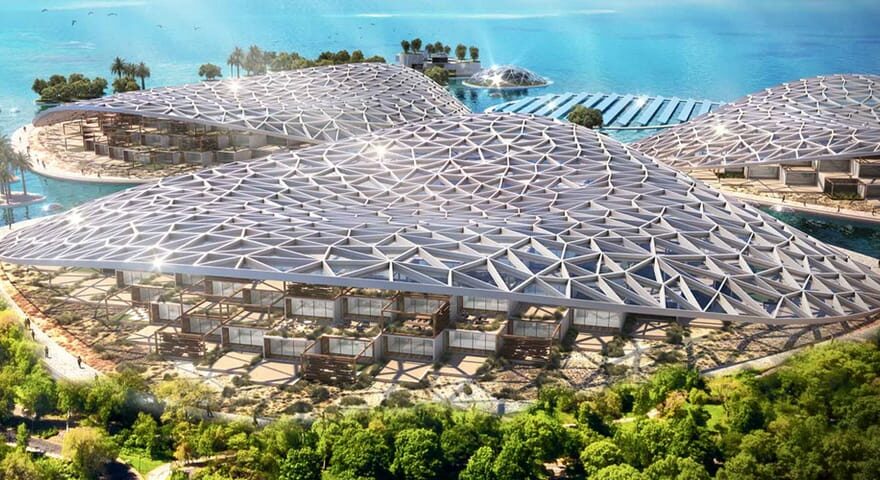Net-zero developer URB has unveiled “Dubai Reefs,” a “floating sustainable city” aiming to protect the marine environment, advance marine science, and produce clean energy and food for Dubai.
Adding to the growing list of grand megaprojects in the city and surrounding regions, Dubai Reefs is dubbed the “world’s largest ocean restoration project,” and will include residential areas, hotels, shops, education facilities, and research institutions. At the heart of it, is the marine institute, which looks to accelerate Dubai’s marine science and conservation efforts while building the most diverse artificial reef spanning 200 square kilometers (77 square miles). Covering an area of more than 37,000 standard football fields, it looks to create a home for over 1 billion corals and 100 million mangroves.
The unique eco-tourism experience includes floating eco-lodges which will all be powered by renewable solar, hydro, and wave energy. Regenerative ocean farming will also be a key part of the project.
“The health of our cities is intrinsically tied to the health of our oceans. The ocean is the source of life controlling everything,” writes CEO of URB, Baharash Bagherian. “Given that everything on our planet is connected, a healthy ocean is a healthy city. Our ocean will be entirely different by the end of the century if we don’t take action today. We need an entrepreneurial spirit in the planning of coastal cities & the types of infrastructure as well as developments that are linked to the ocean. As an innovative coastal city, Dubai is best positioned to lead such a transformation. Beyond creating a unique resilient destination for ecotourism & marine research, Dubai Reefs aims to become a blueprint for ocean living, whilst mitigating the impacts of climate change.”
More information can be found at the URB website.
在 Instagram 查看這則貼文
URB(@urbplanning)分享的貼文
In other news, Julian Klincewicz presents an ethereal Mercedes-Benz x Dolby Atmos campaign.
Source: Read Full Article
